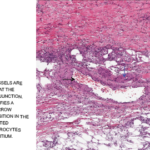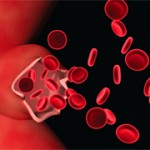Innovations in treatment are another important ongoing research avenue. Dr. Matteson notes that in some cases, our therapeutic choices have actually given clinicians better understanding of disease. “A great example is granulomatosis with polyangiitis (GPA). There was an idea by some clinicians to use rituximab, a B cell inhibitor, to treat GPA, even though there was no evidence that B cells had any involvement in this disease. We didn’t know that.” In this case, the treatment innovation worked. He continues, “Subsequently we’ve gotten better ideas about why that might be the case, and that has given us some insights into the pathophysiology of the disease.”
General Principles of the Case That Still Apply
Dr. Matteson believes the Kussmaul and Meier article demonstrates some important principles that are important to rheumatologists (and other clinicians) moving forward. “The case shows us how we can go wrong if we have fixed ideas about disease.”
He notes that Rokitansky’s description of a clinical case of polyarteritis nodosa predates that of Kussmaul and Meier, but Rokitansky failed to recognize it. “Part of the reason he failed to understand the nature of the disease is that he was not fond of using the microscope, which was actually available even in 1850.”
One of his students later identified the disease based on histological findings. Dr. Matteson notes that Dr. Rokitansky had preconceived notions about what blood vessel disease was. “I think that understanding cases like the Kussmaul case actually provides us with some humility, because we see that there are errors in thinking that are made by very smart people. I think that is important.”
The case also highlights the important role that clinicians can play in recognizing disease associations that ultimately better define diseases and lead to better therapeutics. Kussmaul was an astute clinician, and it was partly his attention to clinical detail that allowed him to successfully characterize the first case of non-infectious vasculitis. Dr. Matteson points out other historical examples of clinicians making such important observations, such as the identification of Helicobacter pylori in the pathogenesis of stomach ulcers, and the many insights of AIDS that were first made by clinicians working directly with patients. “Today there is still lots of opportunity for the clinicians to make important contributions in identifying diseases,” he notes.
Of course, since Kussmaul and Meier’s time, a wide range of clinical diagnostic tools has become available. As Dr. Matteson points out, “They didn’t have X-ray; they didn’t have angiogram—the only thing they could do was an autopsy.” Now, many other techniques are available to the astute clinician, including techniques from molecular biology, gene sequencing and detailed medical imaging. Yet when not paired with careful clinical observations, such tests can sometimes lead us astray.



